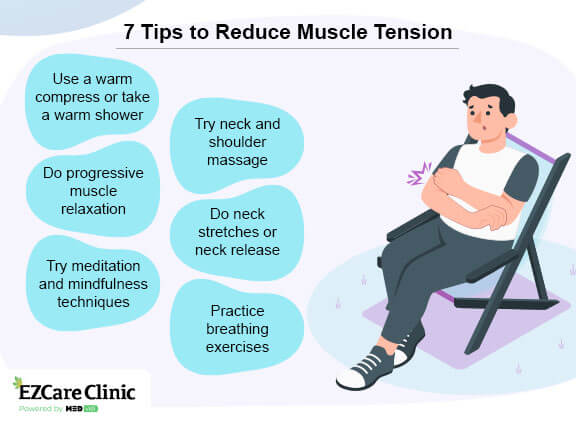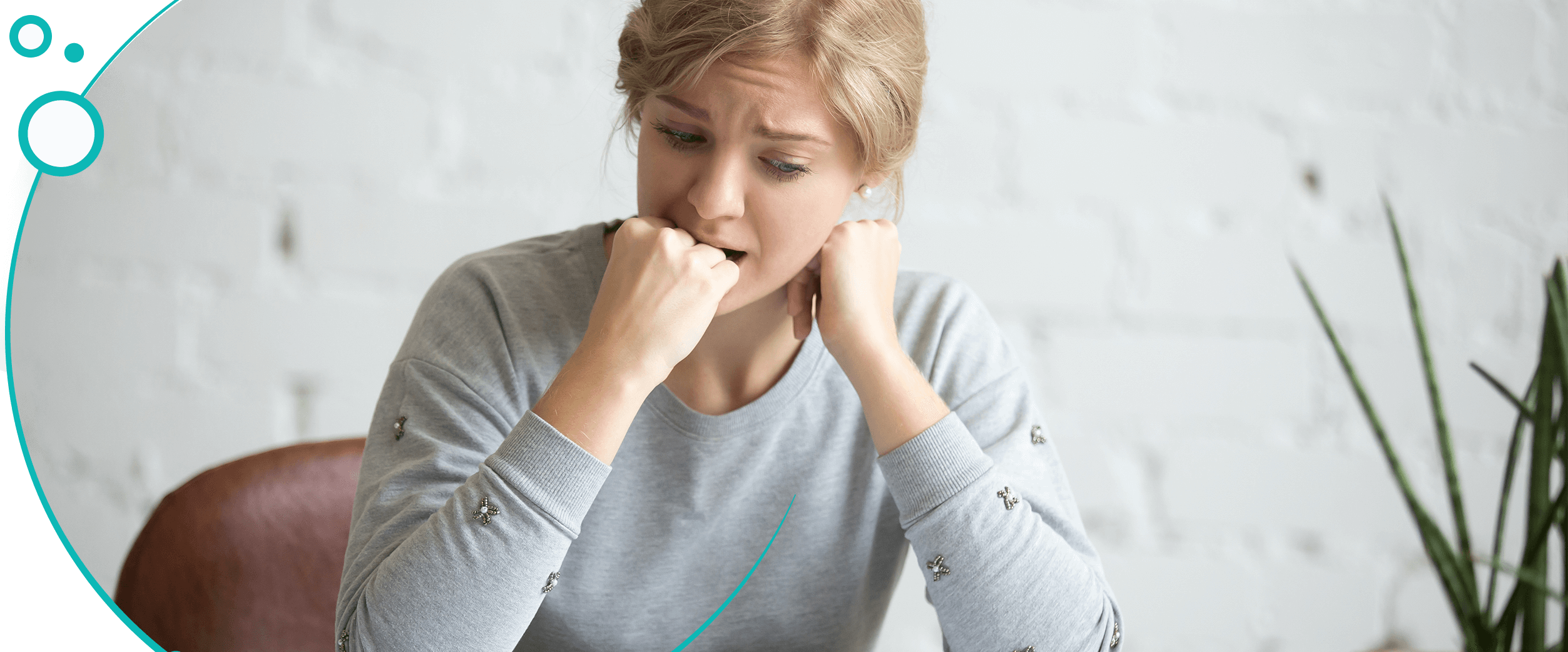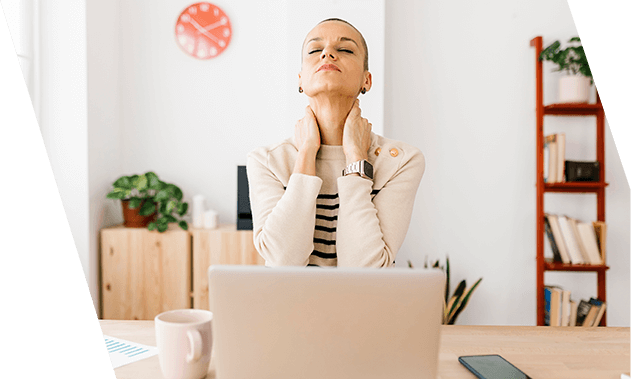When you are stressed or anxious, your body muscles contract. This is part of a reflex reaction called the “fight or flight” response. It’s your body’s natural mechanism for preparing to repel a physical threat. Apart from muscle tension, you can experience other physical symptoms like sweating, quick breathing, and a fast heart rate. These physical symptoms can also lead to emotions such as frustration, irritability, and depression.
If the stressful situation doesn’t clear, your body remains in this state of readiness to confront the threat. When your muscles are tense for a long period, you begin to experience conditions like pain and tension in the neck and shoulders which can also radiate to cause headaches. Here is how to manage it.
See a doctor online to get professional help for anxiety.
Techniques for Neck and Shoulders Relaxation
Warm Compress
It is a popular home remedy for neck and shoulder tension caused by an anxiety disorder. Heat increases blood flow to your muscles, and then blood softens your muscle tissues causing them to stretch and relax. To make such a compress, take a warm heating pad and place a towel between it and your skin. Leave the compress on the back of your neck or shoulder for a few minutes.
Warm Shower
A warm shower is similar to a warm compress. The heat from water increases blood flow to your muscles, leading to a relaxed sensation and reduced stiffness. It can also help soothe sore muscles. You can make your shower more relaxing by listening to soothing music. Also, try stretching your neck and shoulders to increase flexibility while in the shower.
Neck and Shoulder Massage
By reducing muscle tension and triggering the release of endorphins (natural painkillers) and massage can aid in relaxation. Some common massage techniques used include deep tissue massage, trigger point therapy, and Swedish massage. If you cannot see a massage therapist, use a roller ball for self-massage. Hand massagers can also relieve muscle tension when you don’t have someone to help you. Alternatively, place your hand in a “C” position and apply pressure on the sore spots for a few seconds. Release the pressure and move to another set of muscles.

Meditation
Another way to release tension in the neck is meditation. Meditation can help reduce tension in the neck and shoulders by increasing awareness of where tension is held in the body and promoting relaxation, which reduces muscle tension. In fact,
Breathing Exercises
One of the easiest ways to relieve anxiety and muscle tension is through belly breathing exercises or diaphragmatic breathing. These techniques help your body relax by increasing oxygen flow in the body. To do the exercise, breathe in deeply through your nose and let your stomach expand. Then, exhale through your mouth. You can apply this exercise anytime you are going through stress or need to relax.
Anxiety can be managed effectively. See an EZCare doctor online to know how we can help you.
Exercises That Reduce Tension in Your Neck and Shoulders
Cat-Cow Pose
This is an effective yoga pose for neck tension and back pain. It also releases tension in your torso as well as improves spinal flexibility. This is how to do it:
- Get on your hands and knees. Your knees and wrists should be positioned beneath your hips and shoulders, respectively.
- Inhale and make a cat pose: lift your chin and chest while lowering your belly to the floor. Open your chest and shoulders, look up at the ceiling, and pause.
- Exhale and make a cow-pose by pulling your belly toward the spine and your back toward the ceiling. You should be looking down. Pause for a while.
- Inhale and repeat the sequence again.
Neck Stretches
Another way to relieve tension in the neck and shoulders from anxiety is performing a neck stretch. This exercise improves your range of motion and alleviates discomfort in these areas.
Stand upright with your arms at your side. Place the right hand on your head. Pull your head gently toward the right until you stretch the left side of your neck. Remain in this position for a few seconds and return to the center. Repeat the exercise on the left side. Perform these stretches gently and mindfully several times.
Neck Release
Another exercise for releasing tension in your shoulders and neck is the neck release. It involves applying gentle pressure to trigger points in the neck and shoulder area to help release tension and promote relaxation. Stand upright with your arms by your sides. Lower your head and move your chin toward the chest. Tilt your head to the right side and hold pressure in this position for a few seconds. You will feel a stretch in the left part of your neck. Move your head back to the center and repeat the exercise. Do the same with your left side to relieve tension in the neck and shoulders from anxiety.

Shoulder Rolls
This is an easy way to relax the neck and shoulders while sitting at your desk. Shoulder rolls can help loosen tight muscles and increase flexibility in the neck and shoulders, reducing discomfort, pain, and stiffness. With your arms and hands by your sides, roll your shoulders forward several times. Hold the same position, but this time roll your shoulders backward several times. Perform this exercise to achieve decreased muscle tension from anxiety.
Progressive Muscle Relaxation
Experts have linked
To perform this exercise:
- Tense each muscle group in your body and maintain this position for a few seconds
- After you exhale, relax the muscles for a few seconds
- Follow the same procedure for the next muscle group to experience a release of muscle tension.
In Closing
Different exercises and techniques can help relieve muscle tension in the neck and shoulders caused by anxiety. However, this approach only helps manage the symptoms and doesn’t influence the causes and effects of anxiety directly. If you see that neck tension is not the only symptom, and anxiety interferes with your daily life, seek medical help. Psychotherapy and medications can boost the benefits of yoga and other lifestyle changes.
Sources
- Mindfulness-based stress reduction for chronic pain conditions: Variation in treatment outcomes and role of home meditation practice. (2009)
Source link - Relaxation techniques as an intervention for chronic pain: A systematic review of randomized controlled trials. (2021)
Source link - The effect of progressive muscle relaxation on daily cortisol secretion. (2015)
Source link



